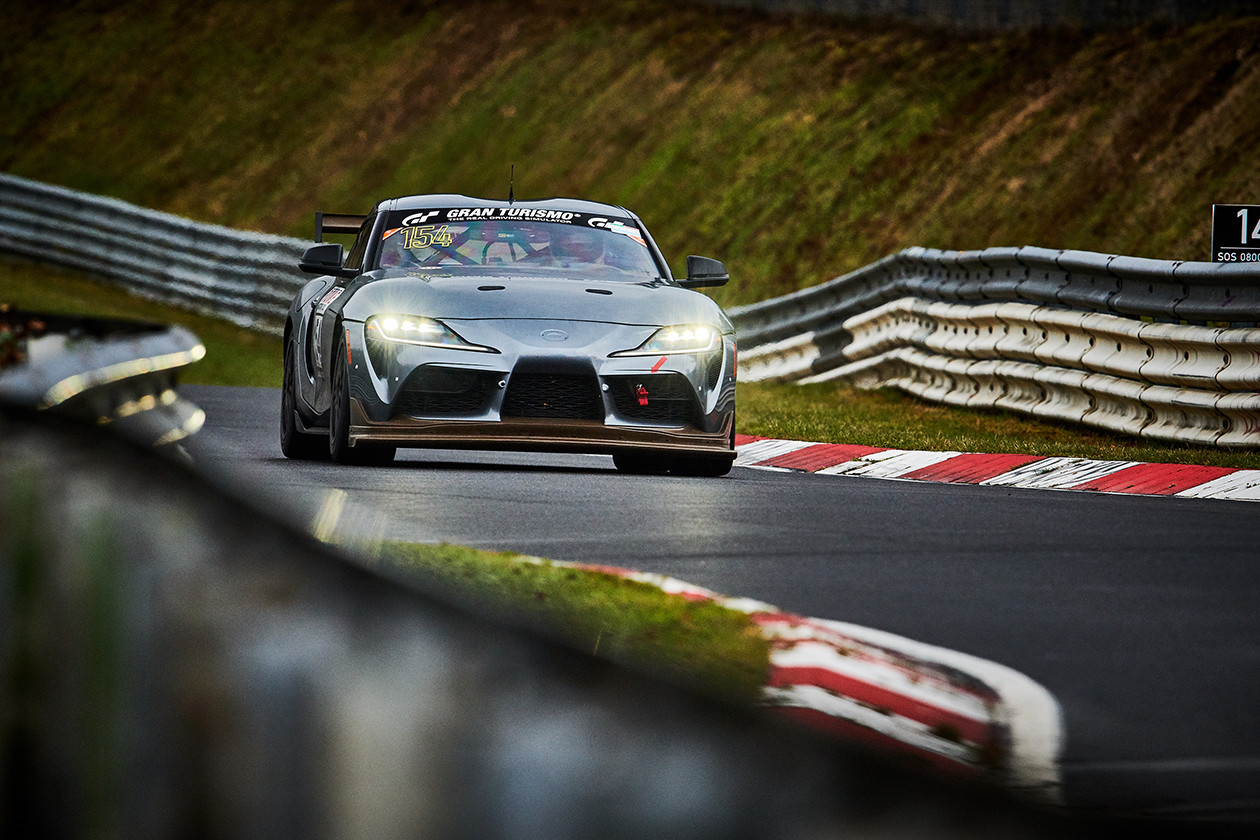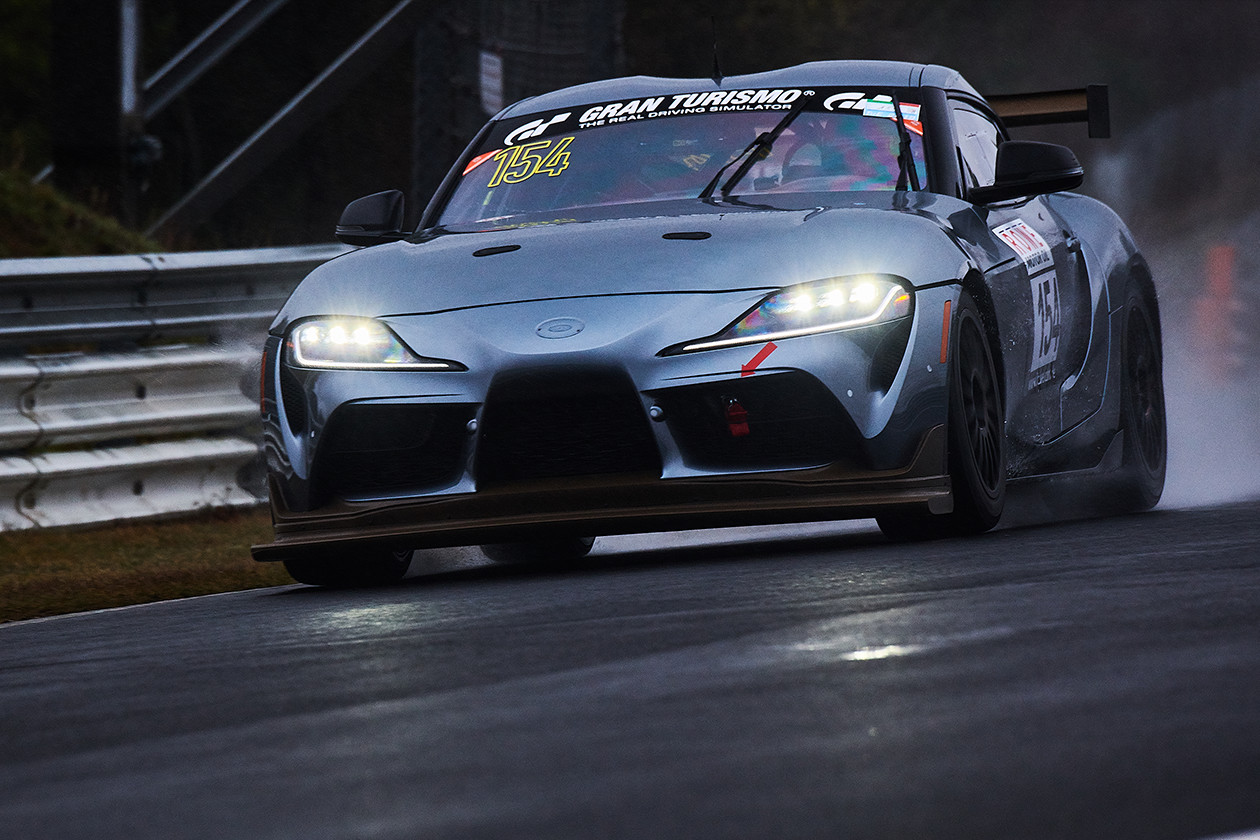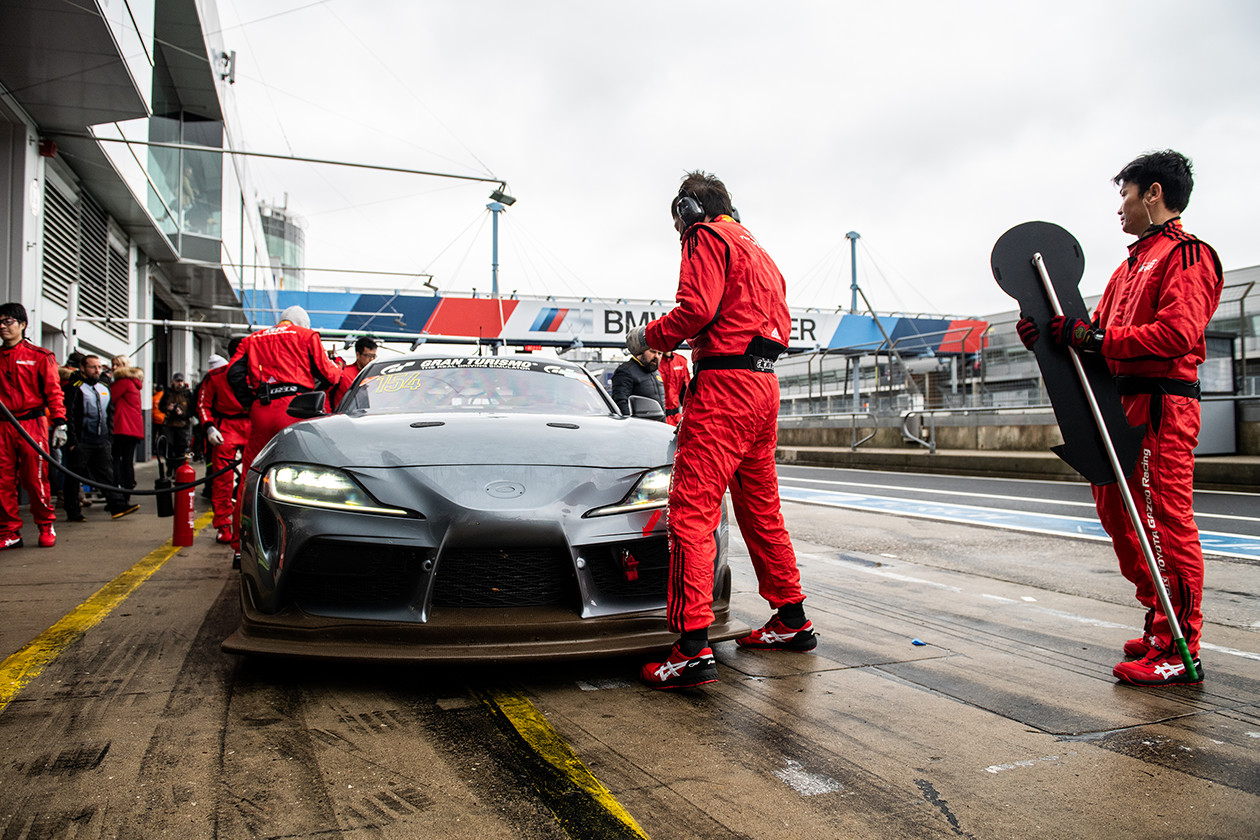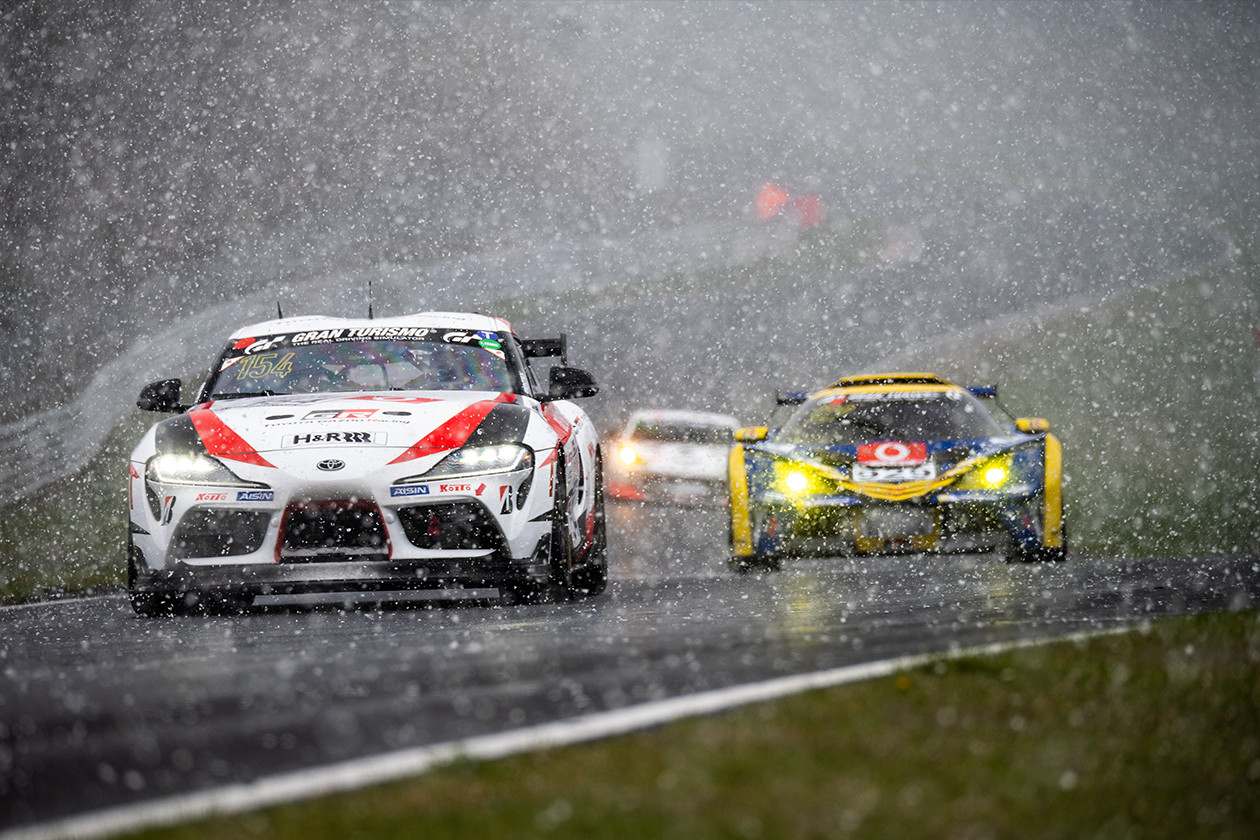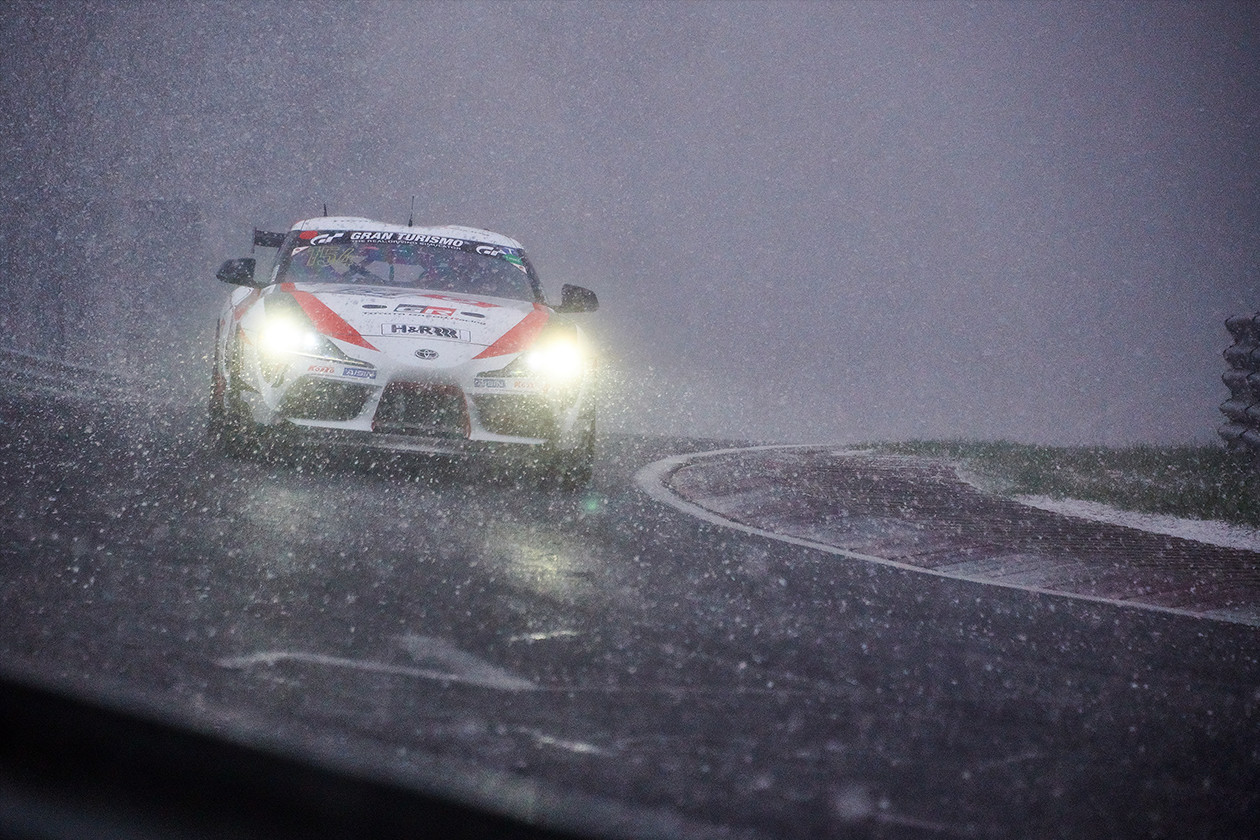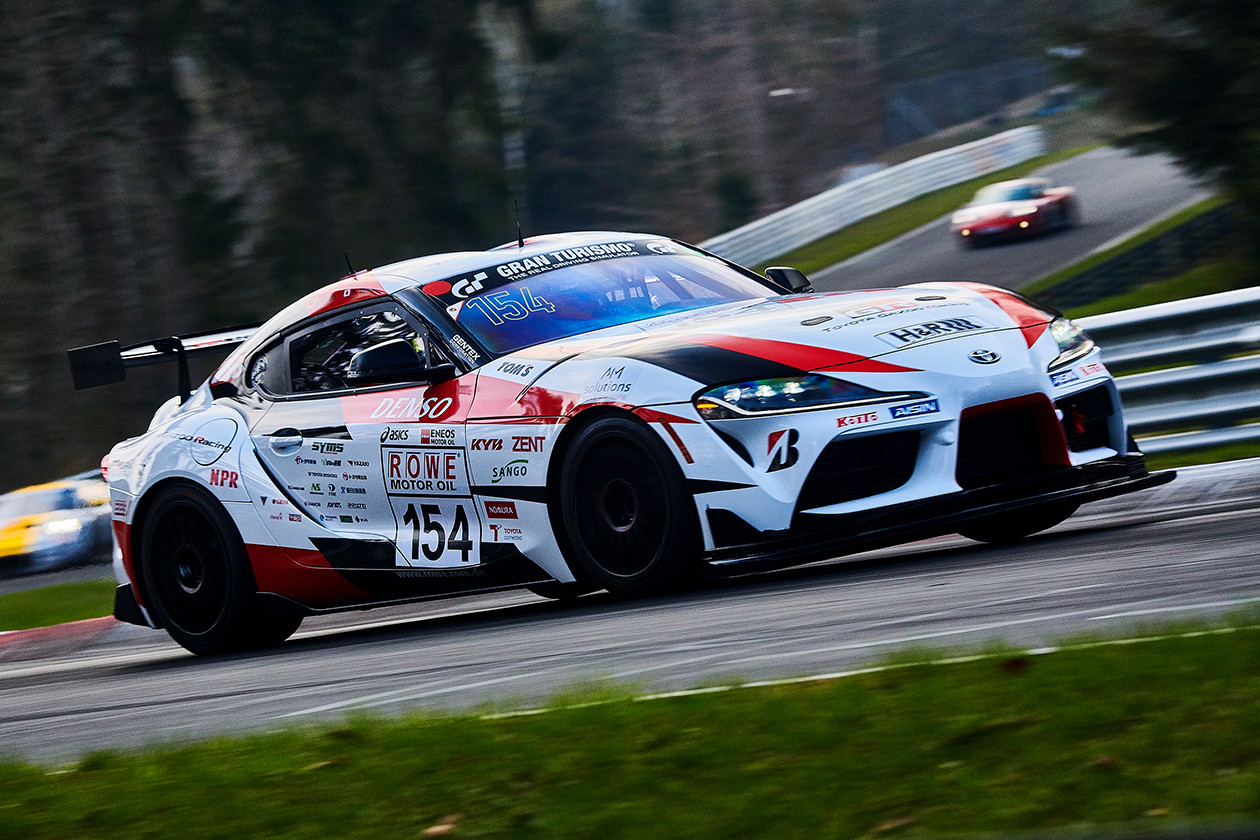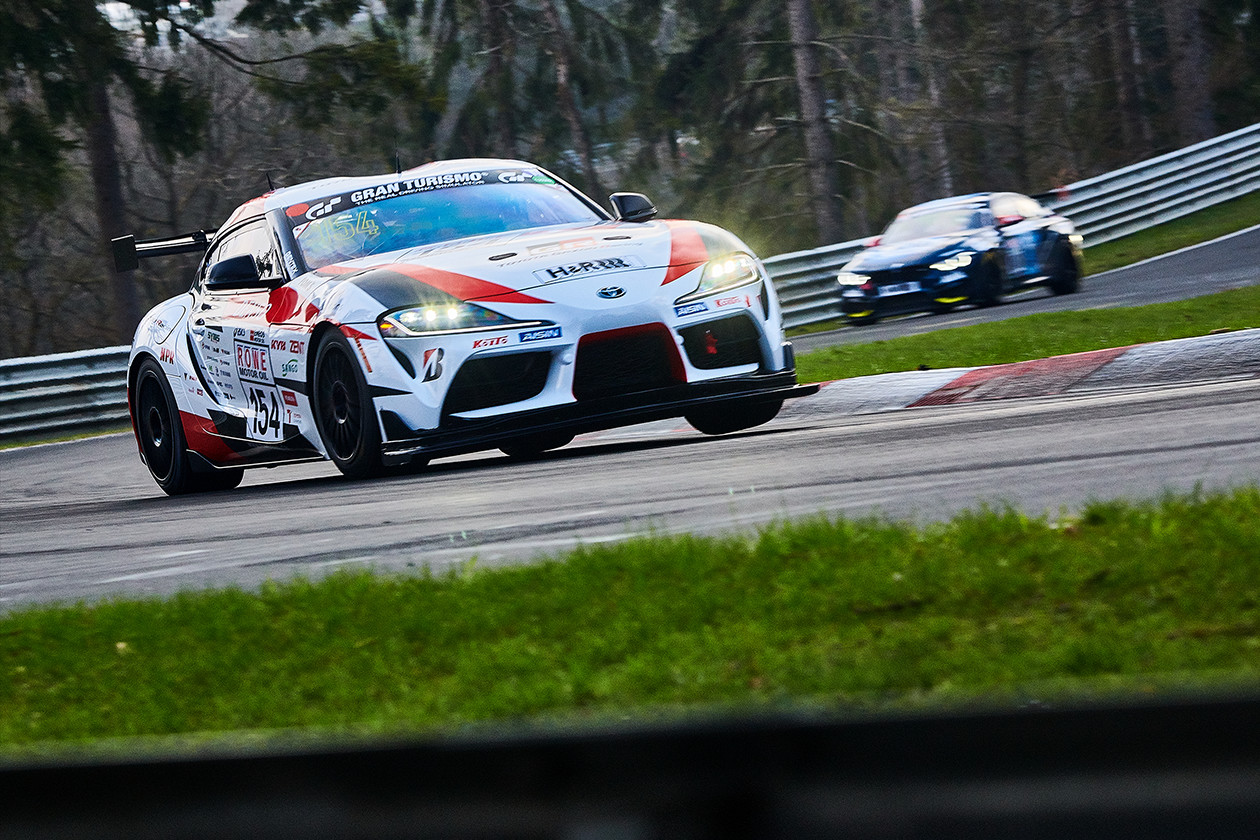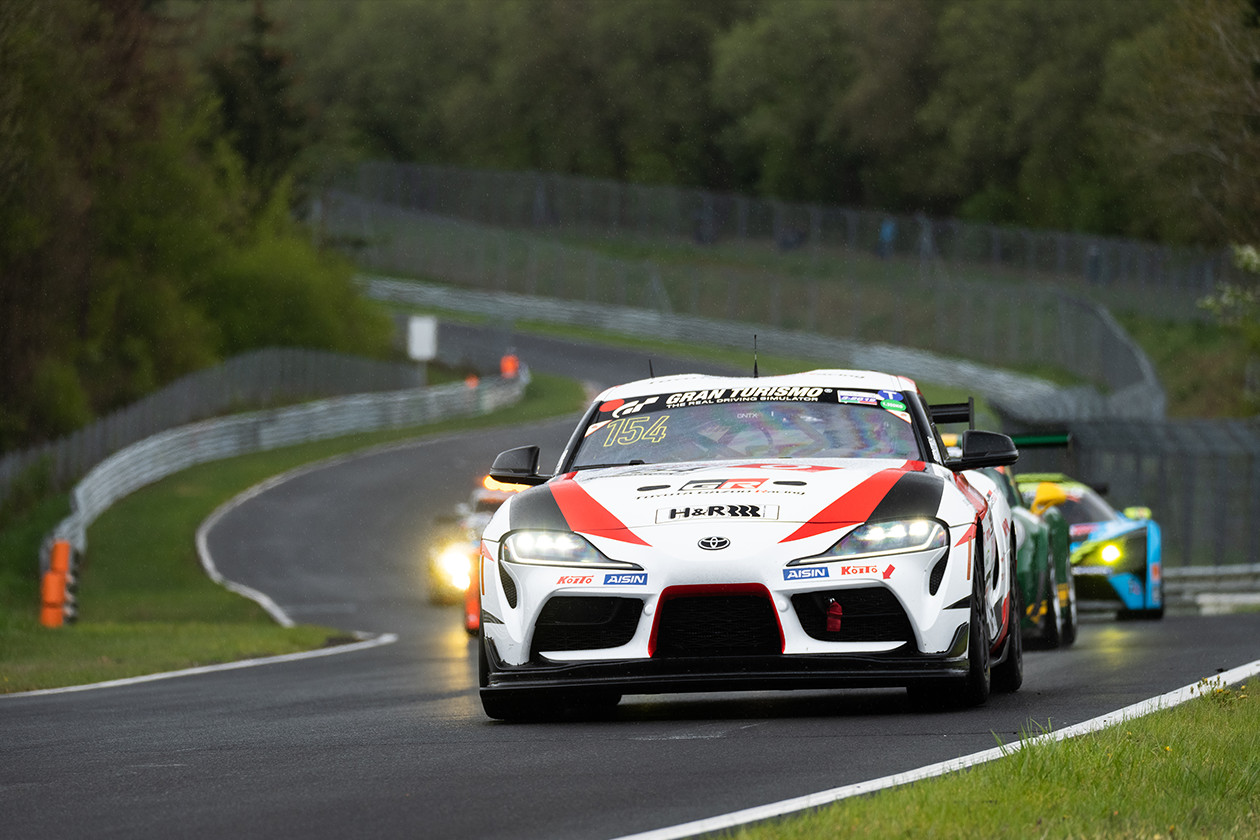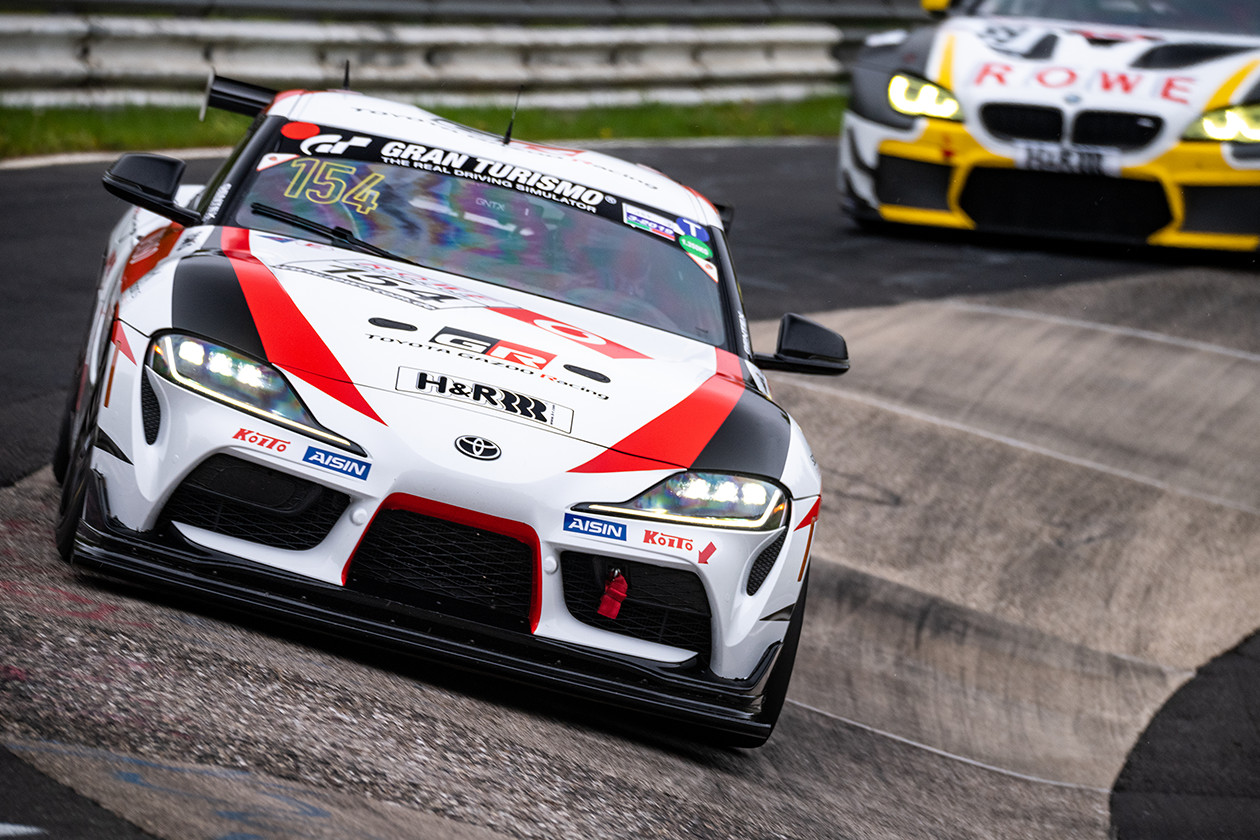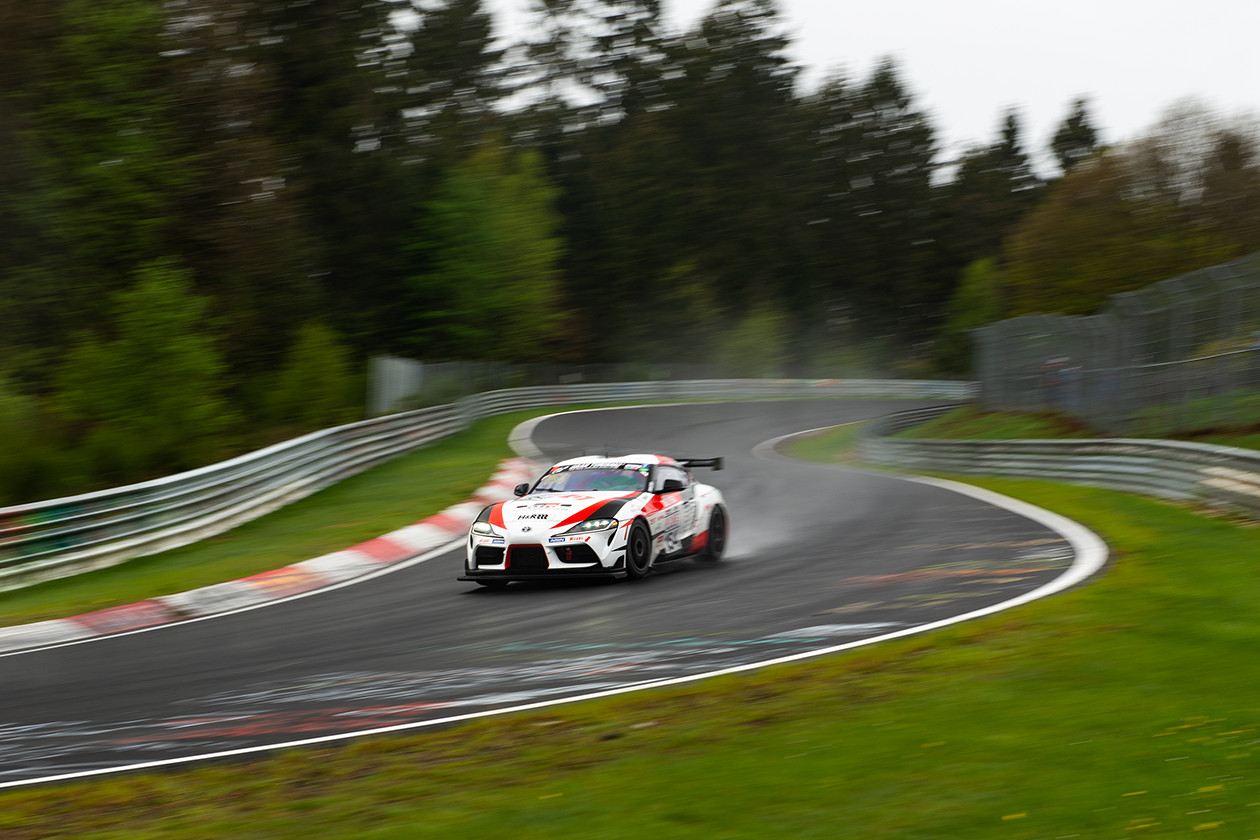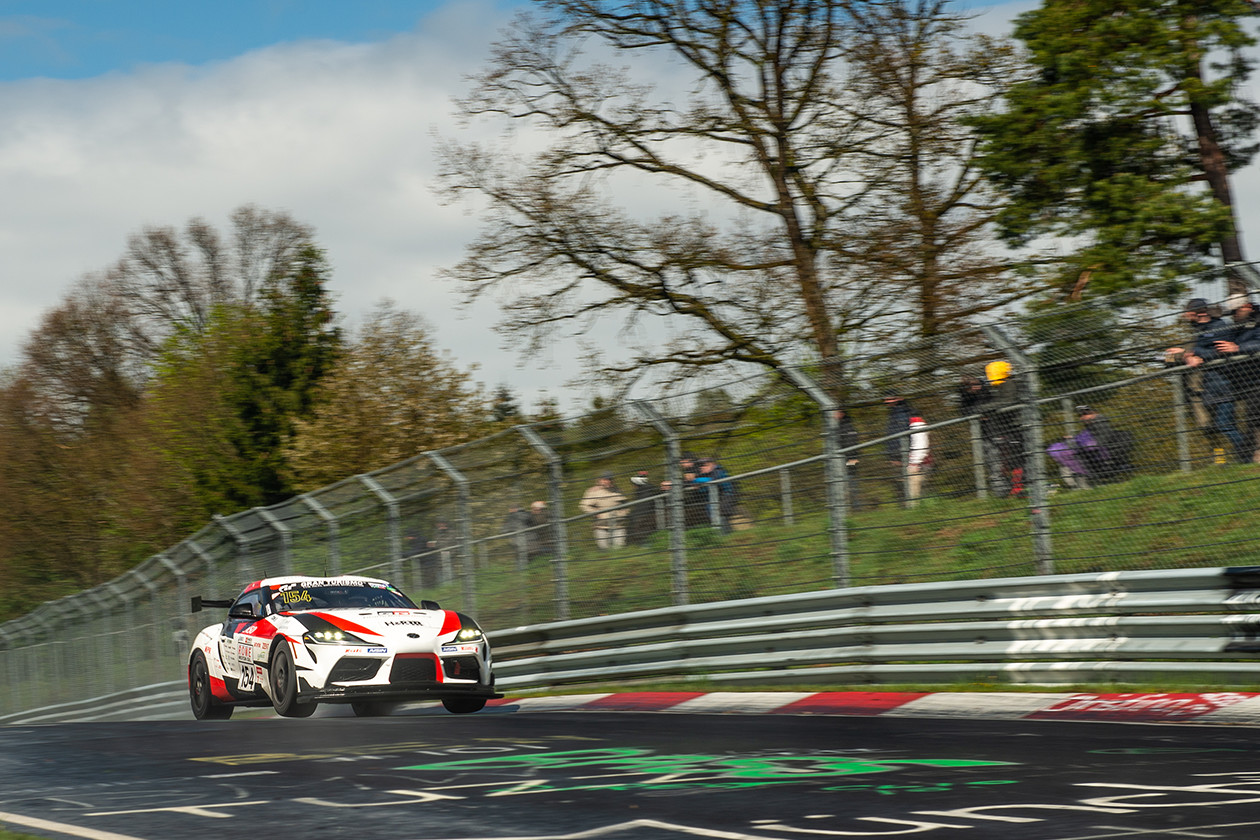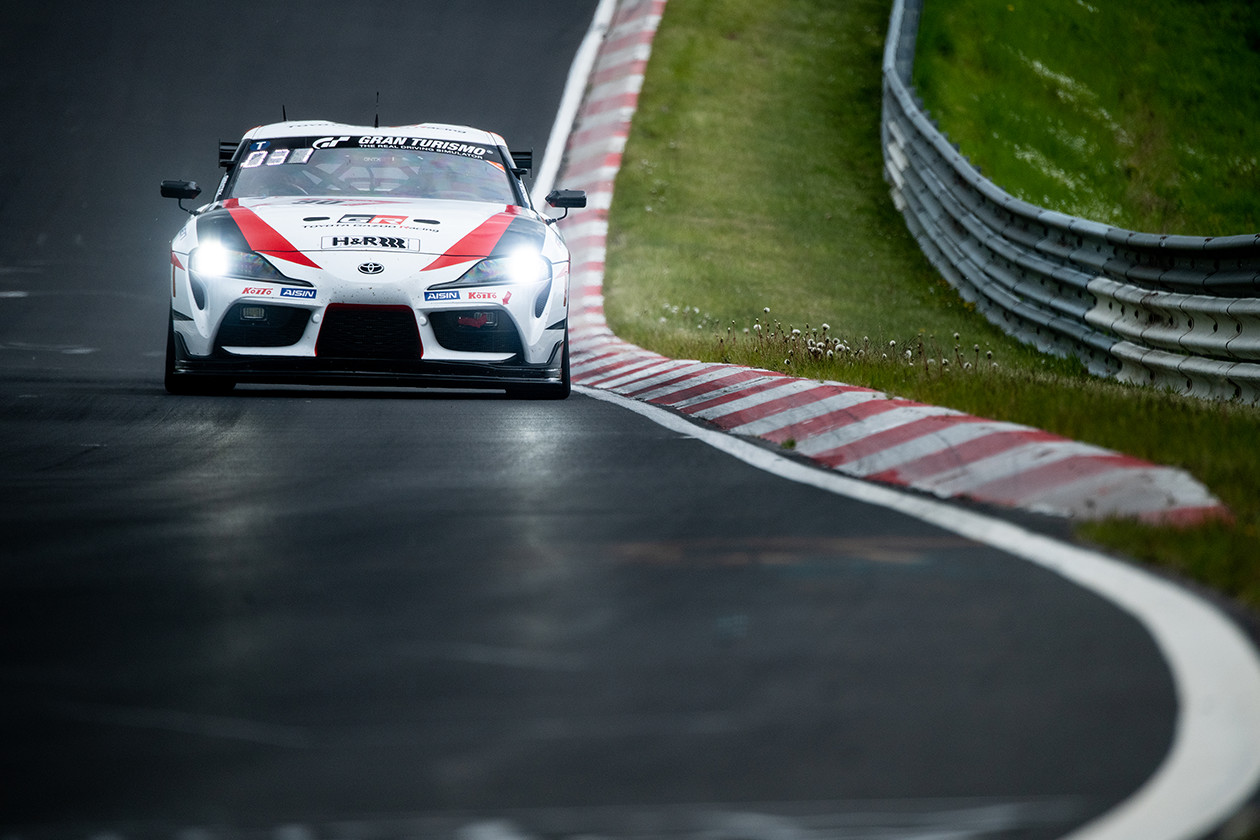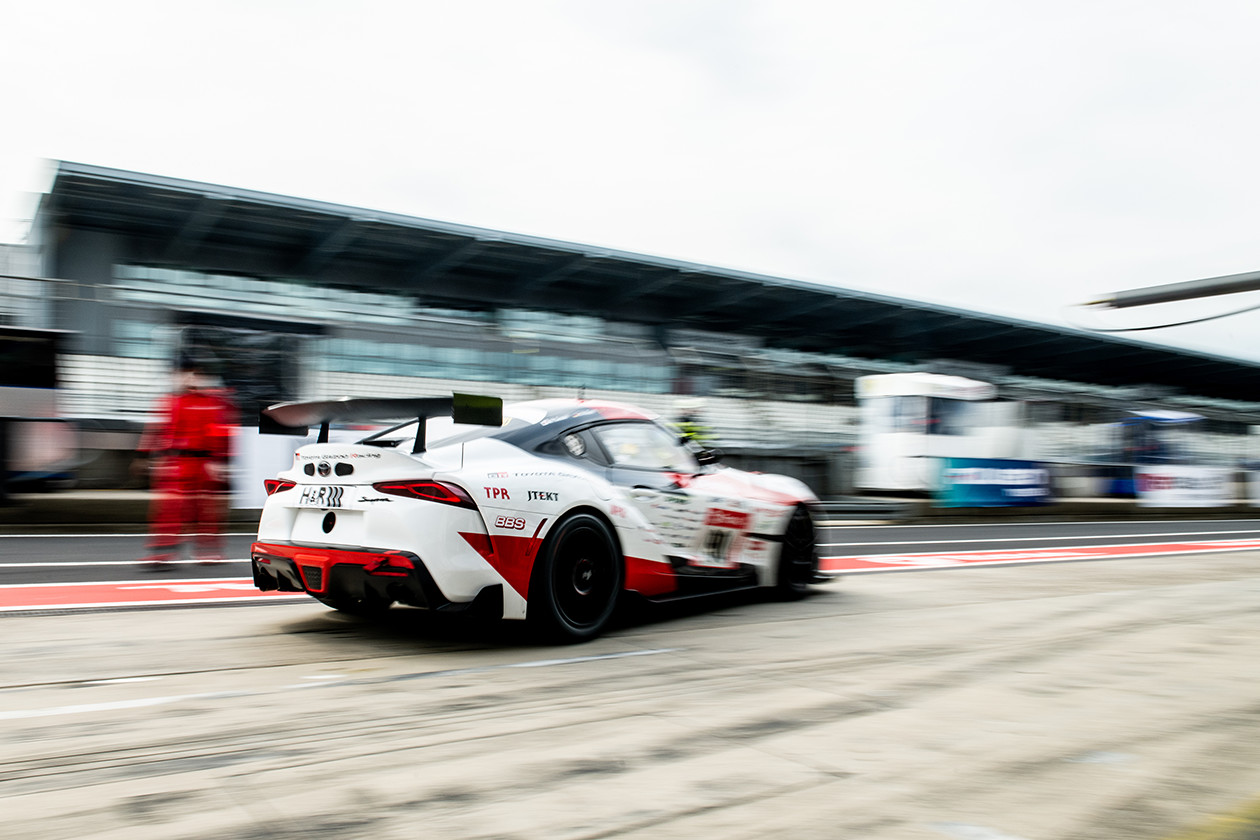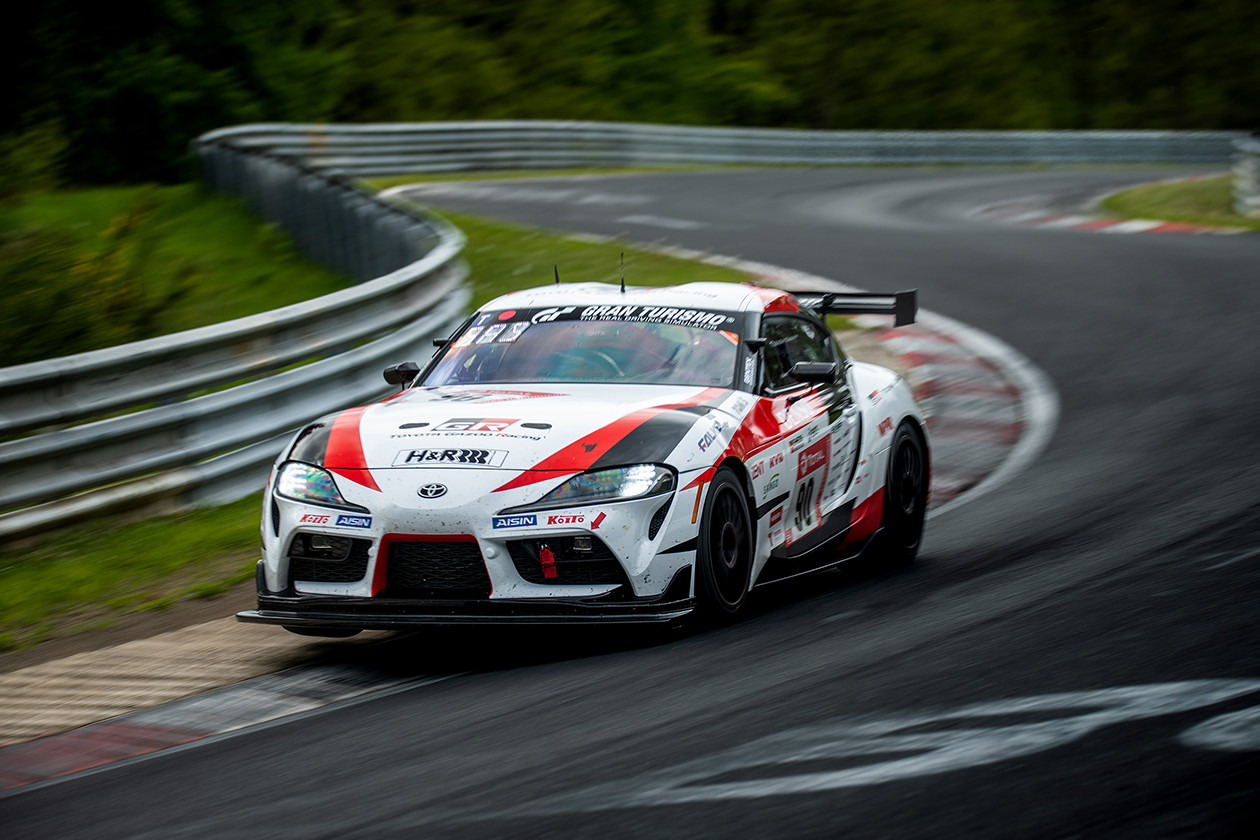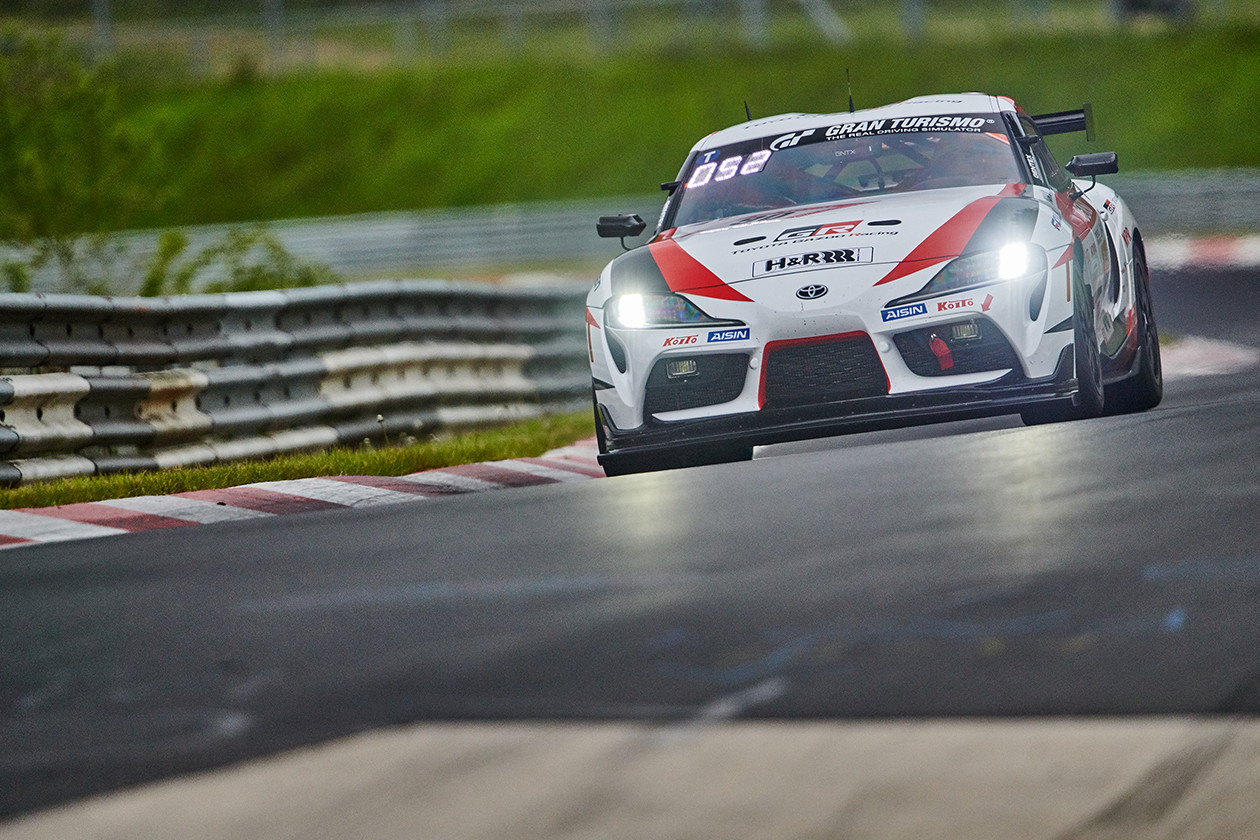The GR Supra and its Potential as a Racing Car
The Supra launched in 1978 as an upper grade Celica model, with the first-generation A40/50 being positioned as a luxury coupe. The second-generation A60, which was released in 1981, ceded that position to the Soarer, and began its transformation into a pure sportscar; the third-generation Supra, launched in 1986, participated in touring car races and rallies. In 1993, Toyota launched the fourth-generation Supra A80 as its flagship sportscar model. With a keen focus on the car’s basic performance, the A80 is renowned for having been refined at the Nürburgring in Germany. Then in 2019, after a 17-year silence, the Supra was resurrected with the fifth-generation A90.
The chief engineer for the A90, Tetsuya Tada, was also chief engineer for the 86.
What type of sportscar did he intend to make?
“The term ‘sportscar’ covers many different genres,” said Tada. “After spending a year or so considering various ideas, we came to the conclusion that the Supra should be a pure sportscar—a sort of older brother to the 86. When we launched the 86, many previously silent Toyota fans made their voices heard at headquarters. There was an overwhelming desire to resurrect the Supra, and this desire was particularly strong in the U.S. Not all the previous Supra models were pure sportscars; however, given the current mission of the GR Company is to create cars that have been developed via racing, it was clear to us that we had to take the new Supra in this direction.”
Eighty to Ninety Percent of a Car’s Characteristics are Determined by its Wheelbase and its Axle Track
The new Supra inherited its in-line six-cylinder engine and FR layout from previous generations. But what was the overriding priority for Tada and his team?
“Previous Supra generations featured rear seats—albeit very narrow ones—but we decided to make the new Supra a two-seater. Eighty to ninety percent of a car’s characteristics are determined by its wheelbase and axle track. Previously, Toyota had to incorporate various market needs, so even when developing its sportscars the company had been unable to realize the packaging it truly wanted. In contrast, the GR Supra packaging was developed with the highest priority on driving performance. As a result, we managed to achieve a wheelbase-axle tread ratio of 1.55—this is close to what is regarded as the golden ratio for sportscars of 1.6.”
Greater Body Rigidity than the Lexus LFA
For the body, the development team opted not to use expensive materials, instead preferring to build the skeletal structure using aluminum and steel. However, by pursuing the optimal bonding strength of different materials, the team succeeded in making the body approximately 2.5-times more rigid than the 86, and more rigid even than the carbon monocoque Lexus LFA. The Supra of course achieves a 50:50 forward-rear weight distribution and, despite being equipped with an in-line six-cylinder engine, has a lower center of gravity than the 86. Its powertrain combines a 3.0-liter in-line six-cylinder turbo engine and an eight-speed automatic transmission.
“When developing the engine, we took clues from rally cars. The question we asked ourselves was: ‘Is the full power and torque of the engine generated the moment you step on the accelerator?’ Our goal was to create a car that was both easy-to-drive and fast.”
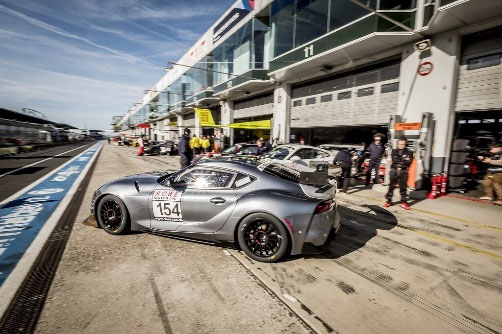
Designed with Racing in Mind
In this way, the GR Supra was developed with a focus on the above characteristics. However, it was also designed so that almost every part could be customized or adapted for racing. A racing version—the GR Supra Racing Concept—was unveiled at the Geneva International Motor Show in March 2018 before the production car version; there was a good reason for this.
“It wasn’t just the racing image we wanted to communicate—the GR Supra Racing Concept was developed in line with Le Mans’ LM-GTE regulations. Previously, when modifying production cars for racing, we often regretted certain decisions we had made when designing the base model. By developing the racing car version of the Supra first, we were able to generate useful feedback for the production car version.”
A Joy to Drive on Circuits, Even with Minimal Tuning
“With the 86, tuning was focused primarily on aerodynamic and cosmetic parts; however, we designed the GR Supra so that even the functional parts could be modified. Previously, one of the bottlenecks when tuning was heat dissipation. No matter how much you enhance the engine, transmission, differential, and brakes, the car itself must respond appropriately for their full potential to be realized. For this reason, we incorporated a number of ducts in the exterior design; we also inserted drains—which are necessary for attaching oil coolers—to the engine, transmission, and differential, and made sure there was just enough space to attach these coolers. In other words, the Supra is a production car designed to make racing modifications incredibly easy. Compared to existing cars, the Supra can be fully enjoyed on circuits, even with minimal tuning.”
The production version of the Supra is fitted with covers to reduce sound and prevent water ingress; however, the car has been designed so that various parts can be cooled simply by removing the covers and making minor modifications. Ducts were installed in the model that took part in last year’s VLN9, while both ducts and oil coolers have been equipped to the race machine that will enter this year’s 24 Hours of Nürburgring.
The GR Supra GT4 Concept was unveiled at the Geneva International Motor Show in March 2019. Tada commented: “One of the messages we wanted to communicate was that the new GR Supra has been designed with customer motorsports in mind. Leaving aside whether this car would race or not, we wanted to provide an example of what happens when you unravel the mysteries of customizing the GR Supra. I have driven a prototype of this model on circuits: it was phenomenally enjoyable.”
